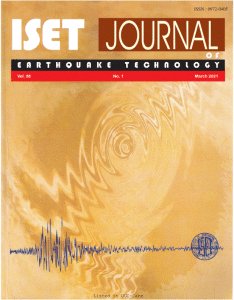Home > Issues & Journals
PERFORMANCE-BASED SEISMIC DESIGN OF 3D R/C BUILDINGS USING INELASTIC STATIC AND DYNAMIC ANALYSIS PROCEDURES
Andreas J. Kappos and Georgios Panagopoulos
Paper No.: 444
|
Vol.: 41
|
No.: 1
|
March, 2004
|
pp. 141-158

Abstract
A performance-based design procedure for realistic 3D reinforced concrete (R/C) buildings is presented, that involves the use of advanced analytical tools. Depending on the building configuration, use of two alternative tools is suggested, i.e. either time-history analysis for appropriately scaled input motions, or inelastic static (pushover) analysis, both for two different levels of earthquake loading. The critical issues of defining appropriate input for inelastic dynamic analysis, setting up the analytical model that should account for post-yield behaviour of the plastic hinge zones, defining loading in two directions and target displacement for the pushover analysis, and detailing in a way consistent with the deformations derived from the advanced analysis, are discussed. The proposed method is then applied to a regular multistorey reinforced concrete 3D frame building and is found to lead to better seismic performance than the standard code (Eurocode 8) procedure, and in addition leads to a more economic design of transverse reinforcement in the members that develop very little inelastic behaviour even for very strong earthquakes.
Keywords: Performance-Based Design, Seismic Design, Reinforced Concrete Buildings, Inelastic Analysis, 3D Effects
©2025. ISET. All Rights Reserved.